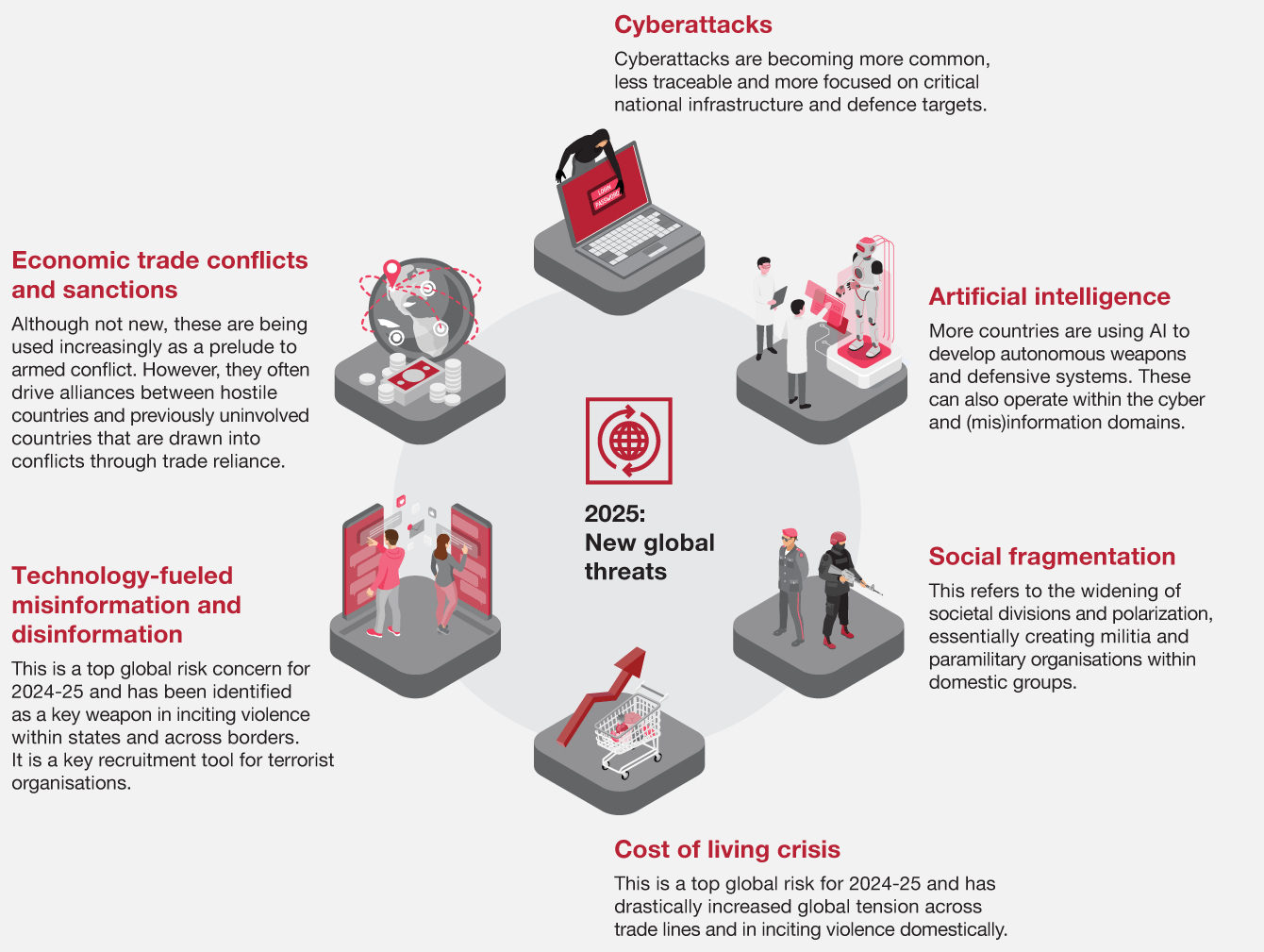A paradigm shift is transforming the defense landscape
Public defense organizations today find themselves in a very different world, far more intricate than it was in the late 20th and early 21st centuries. This evolving landscape stretches beyond the traditional defense industry, casting a wider net across numerous domains. Adding to this complexity, nations face ever-changing threats that require daily vigilance and action. The fusion of a transformed ecosystem and these emerging threats has propelled them into an entirely new era.
To rise to these challenges, public defense organizations need to adapt swiftly, enhancing their ability to deter and counter both current and future threats. This transformation calls for a fresh look at how national defense bodies are organized within governments and how they collaborate with society and industry. Our study aims to pave the way for a new operating model in defense organizations, tackling both familiar and novel challenges. We propose eight targeted service offerings designed to boost skills and capabilities.
Crafting tomorrow’s defense blueprint
To tackle both current and emerging threats effectively, public defense organizations need a new operating model. This model must ensure that military forces can be efficiently prepared and deployed, adapting to operational demands and leveraging new technologies. The size of these defense organizations varies widely — from small self-defense units to large, globally active forces. However, all defense organizations share four common outcomes which their operating model and capabilities need to deliver:
Outcome 1: Improved defense outputs
The biggest challenge for defense organizations is rapidly boosting their deployable and sustainable military power for both present and future needs. Outdated processes and cultures, combined with stagnant or reduced budgets, have weakened the defense industrial base's ability to evolve. New, more agile approaches and organizational capabilities are essential.
Outcome 2: Increased political influence
Countries like those in the Nordic region have developed comprehensive security models that link various state and non-state entities, enhancing national resilience. Many other nations do not possess this level of integration. A revamped defense operating model should enable defense ministries to engage more effectively with other government sectors, thereby strengthening the defense agenda and securing better funding.
Outcome 3: A sustainable, vibrant and agile defense industrial base
Recent geopolitical disruptions, such as the war in Ukraine, have highlighted the urgent need for a deliberate expansion and fortification of both national and international defense industries. This ensures a rapid buildup of essential military platforms and ammunition.
Outcome 4: An integrated defense ecosystem
Defense organizations often lead in technology in select areas but face challenges in attracting and retaining skilled personnel in a digital world. Developing a broad defense ecosystem that includes not only the defense industry but also sectors like industrial products, data analytics, AI, and R&D, is vital. This integration will facilitate access to best practices, cutting-edge technology, and skilled talent.
Elevating capabilities in a dynamic threat landscape through eight service offerings
In light of an ever-evolving threat environment, defense organizations need to adopt innovative approaches to develop essential future competencies. By pursuing eight targeted service offerings, these organizations can strategically acquire the skills and capabilities needed to meet their unique demands:
Building a secure and stable future together
A paradigm shift is reshaping the defense ecosystem. Public defense organizations need to rapidly change and adapt in the key areas outlined above to deter and defeat future threats. There is no simple or easy fix but, when looked at globally, there are examples of good practice in all these areas that defense organizations can draw upon and build new competencies and capabilities as the basis for their target operating model.
Georg Reichel and Svenja Kirsch have co-authored this report.
Expert discussions
Robust and agile defense supply chains
The new operating model of defense organizations
The future of public defense organizations
Contact us

Partner, Government and Public Sector; Global Defence Leader, PwC Canada
Tel: +1 416 500 5623
